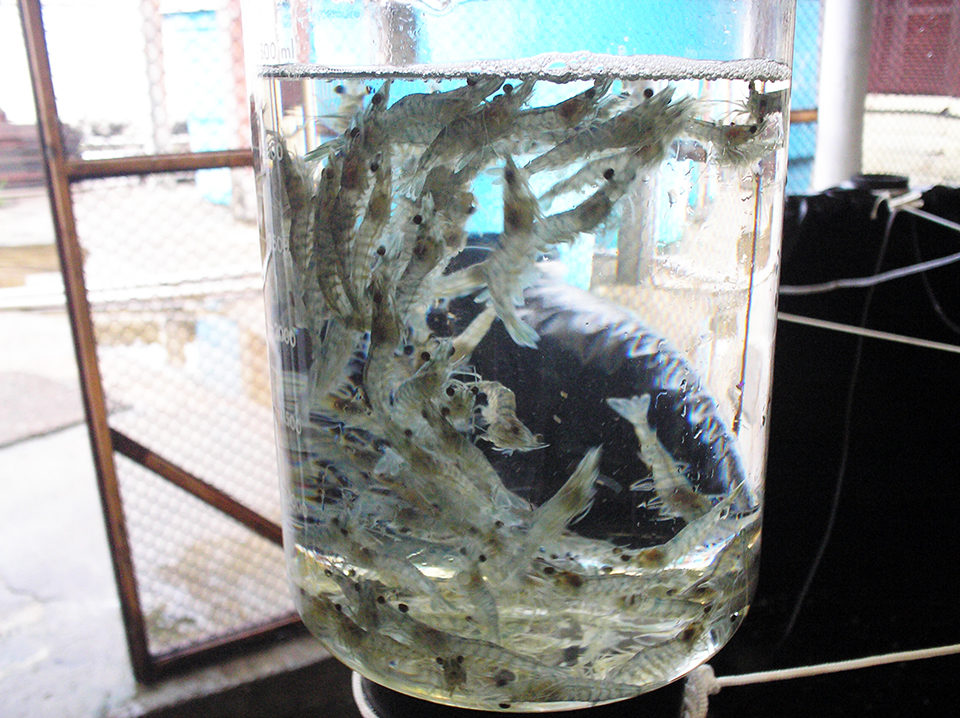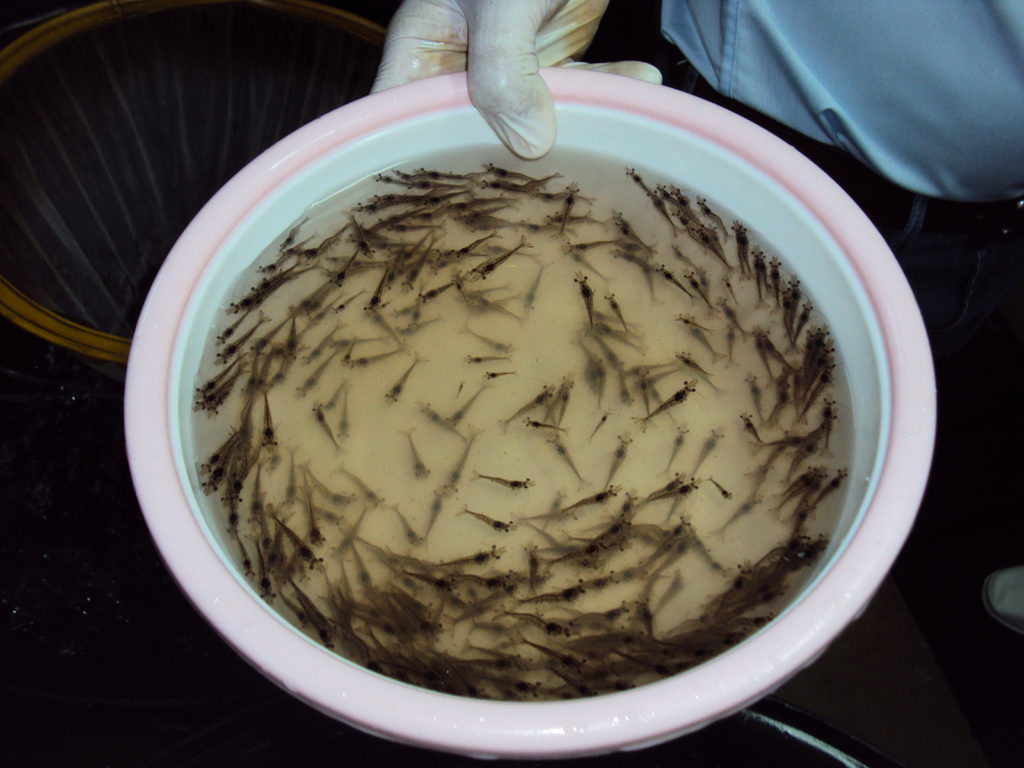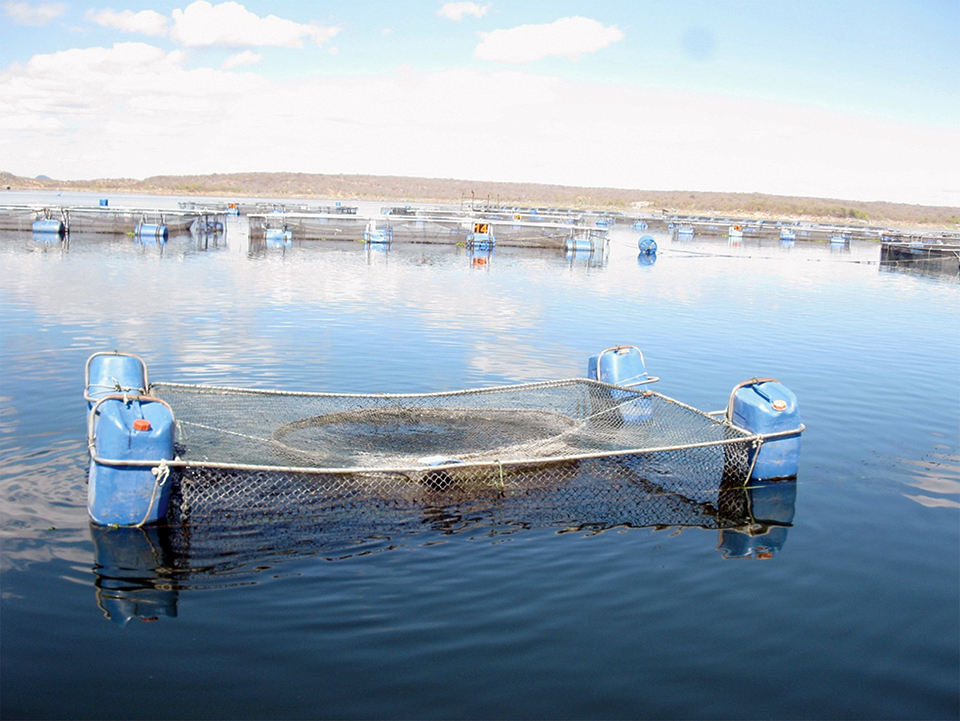Product increased shrimp performance even in a heterotrophic environment

Aquaculture is the fastest-growing food-producing sector in the world, with an average annual growth rate of 8.9 percent since 1970. Marine shrimp culture is the main economic activity developed in this field.
With the increasing intensification and commercialization of aquaculture production, disease problems inevitably emerged that are mainly caused by bacterial pathogens of the genus Vibrio, which affect shrimp survival and growth. These opportunistic microorganisms are part of the flora of penaeid shrimp, and may cause illnesses under unfavorable environmental conditions.
The wide use of antimicrobial drugs, pesticides and disinfectants in aquaculture has caused the evolution of resistant strains of bacteria, so defining alternative strategies to support aquaculture productivity is extremely necessary.
Probiotics
Among the alternatives proposed, the use of probiotics has shown promising results and is now widely accepted as a complementary tool for the management of disease and improving nutrition of aquatic animals. Probiotics are also cited as an alternative to antimicrobial drugs, enhancing the growth and disease resistance of cultured shrimp, as well as improving their immunosystem responses and general welfare.
Studies have reported the development of intensive shrimp culture systems without water exchange as a way to improve biosecurity and reduce environmental impacts. However, little information is available regarding the use of probiotics in these systems.
The authors evaluated the use of a commercial probiotic and the newly isolated potential probiotic bacteria Bacillus cereus var. toyoi during the nursery rearing of pink shrimp, Farfantepenaeus brasiliensis, in a zero-exchange, aerobic, heterotrophic culture system.
Study setup
The authors conducted the experiment at the Universidade Federal do Rio Grande Marine Aquaculture Station. Three replicate tanks were randomly assigned and stocked at a density equivalent to 150 shrimp per square meter with the following probiotic treatments: a commercial Bacillus species mixture, Bacillus cereus var. toyoi and a control treatment without probiotics.
Commercial probiotics were added daily following manufacturers’ recommendations. Bacillus cereus var. toyoi was added to reach an equivalent concentration of the commercial product.
Shrimp were fed twice daily via a specially designed feeding tray. The initial feeding rate was 15 percent of total tank biomass, adjusted daily according to shrimp consumption. At the end of the trial, shrimp remaining in each tank were individually counted to determine survival and weighed to determine mean final weight and specific growth rate.
Throughout the experimental period, water temperature, salinity, pH and dissolved oxygen were measured every day. Water samples were collected every two days to evaluate the water quality parameters. For bacteriological analysis, the concentration of presumptive Vibrio species was followed every three days in each tank according to the spread plate technique.
Results
The mean final weight and specific growth rate of the shrimp were significantly higher in the probiotic treatments (Table 1). The water quality parameters monitored during the experiment remained at concentrations suitable for shrimp culture, and no significant differences (P > 0.05) were observed among treatments (Table 2). The bacteriological analysis showed that probiotic treatments maintained the concentration of Vibrio species lower than the control group.
de Souza, Mean survival, final weight, Table 1
| Treatment | Survival | Final Weight | Specific Growth Rate |
|---|---|---|---|
| Commercial Bacillus species mixture | 91.65 ± 11.02a | 1.42 ± 0.40a | 0.036 ± 0.007a |
| Bacillus cereus var. toyoi | 81.90 ± 13.4a | 1.34 ± 0.36a | 0.034 ± 0.004a |
| Control | 88.86 ± 6.36a | 1.22 ± 0.38b | 0.030 ± 0.003b |
Table 1. Mean survival, final weight and specific growth rate of shrimp reared in different probiotic treatments. Different superscript letters indicate significant differences ( P = 0.05).
de Souza, Mean values of water quality parameters, Table 2
| Parameter | Control | Bacillus cereus var. toyoi | Commercial Probiotic |
|---|---|---|---|
| Temperature (° C) | 26.70 ± 0.25 | 26.50 ± 0.10 | 26.40 ± 0.25 |
| pH | 8.10 ± 0.006 | 8.08 ± 0.03 | 8.10 ± 0.02 |
| Salinity (g/L-) | 31.47 ± 0.23 | 32.34 ± 0.40 | 31.58 ± 0.12 |
| Dissolved oxygen (mg/L) | 6.11 ± 0.01 | 6.14 ± 0.02 | 6.19 ± 0.07 |
| Total suspended solids (mg/L) | 538.09 ± 444.70 | 635.66 ± 485.29 | 618.56 ± 453.40 |
| Alkalinity (mg/L) | 184.16 ± 12.40 | 183.33 ± 28.15 | 172.08 ± 15.73 |
| Total ammonia nitrogen (mg/L) | 0.92 ± 1.48 | 1.25 ± 1.89 | 0.91 ± 1.55 |
| Nitrite (mg/L) | 3.65 ± 3.11 | 4.11 ± 3.21 | 4.31 ± 3.54 |
| Phosphate (mg/L) | 3.27 ± 1.32 | 4.78 ± 2.19 | 3.60 ± 1.80 |
| Clorophyll α (µg/L) | 49.78 ± 36.51 | 48.56 ± 39.78 | 61.41 ± 60.75 |
The study demonstrated that Bacillus cereus var. toyoi is a potentially probiotic microorganism for aquaculture use. It increased shrimp performance even in a heterotrophic environment and also presented results similar to those of the commercial product.
(Editor’s Note: This article was originally published in the January/February 2011 print edition of the Global Aquaculture Advocate.)
Authors
-
Diego Moreira de Souza
Laboratório de Maricultura
Instituto de Oceanografia
Universidade Federal do Rio Grande
C.P. 474, Rio Grande R.S.
96201-900 Brasil -
Sabrina Medeiros Suita
Dr. Wilson Wasielesky, Jr.
Laboratório de Maricultura
Instituto de Oceanografia
Universidade Federal do Rio Grande -
Fabio Pereira Leivas Leite
Laboratório de Microbiologia
Universidade Federal de Pelotas -
Luis Alberto Romano
Laboratório de Histologia e Imunologia
Universidade Federal do Rio Grande -
Dr. Eduardo Luis Cupertino Ballester
Laboratório de Carcinicultura
Universidade Federal do Paraná
Palotina, Brasil
Tagged With
Related Posts

Health & Welfare
Assessment of supplemental Bacillus probiotics in whiteleg shrimp juveniles
Results of a feeding study supplementing probiotics in the diet showed that when the Bacillus species were complemented in an appropriate concentration into feeds, the growth and feed efficiency of whiteleg shrimp could be improved.

Health & Welfare
Bacillus probiotics benefit tilapia rearing under challenging conditions in Brazil
A recent study that evaluated the benefits of using probiotics with a balanced mixture of Bacillus bacteria strains to inhibit pathogenic bacteria in tilapia.

Health & Welfare
Bacillus probiotics improve hatchery, nursery production in EMS-hit Mexico
In early 2014, a trial to evaluate the effects of a mixture of Bacillus strains on early mortality syndrome bacteria during the larviculture and nursery phases for shrimp was carried out at a commercial hatchery in Mexico.

Health & Welfare
A holistic management approach to EMS
Early Mortality Syndrome has devastated farmed shrimp in Asia and Latin America. With better understanding of the pathogen and the development and improvement of novel strategies, shrimp farmers are now able to better manage the disease.


